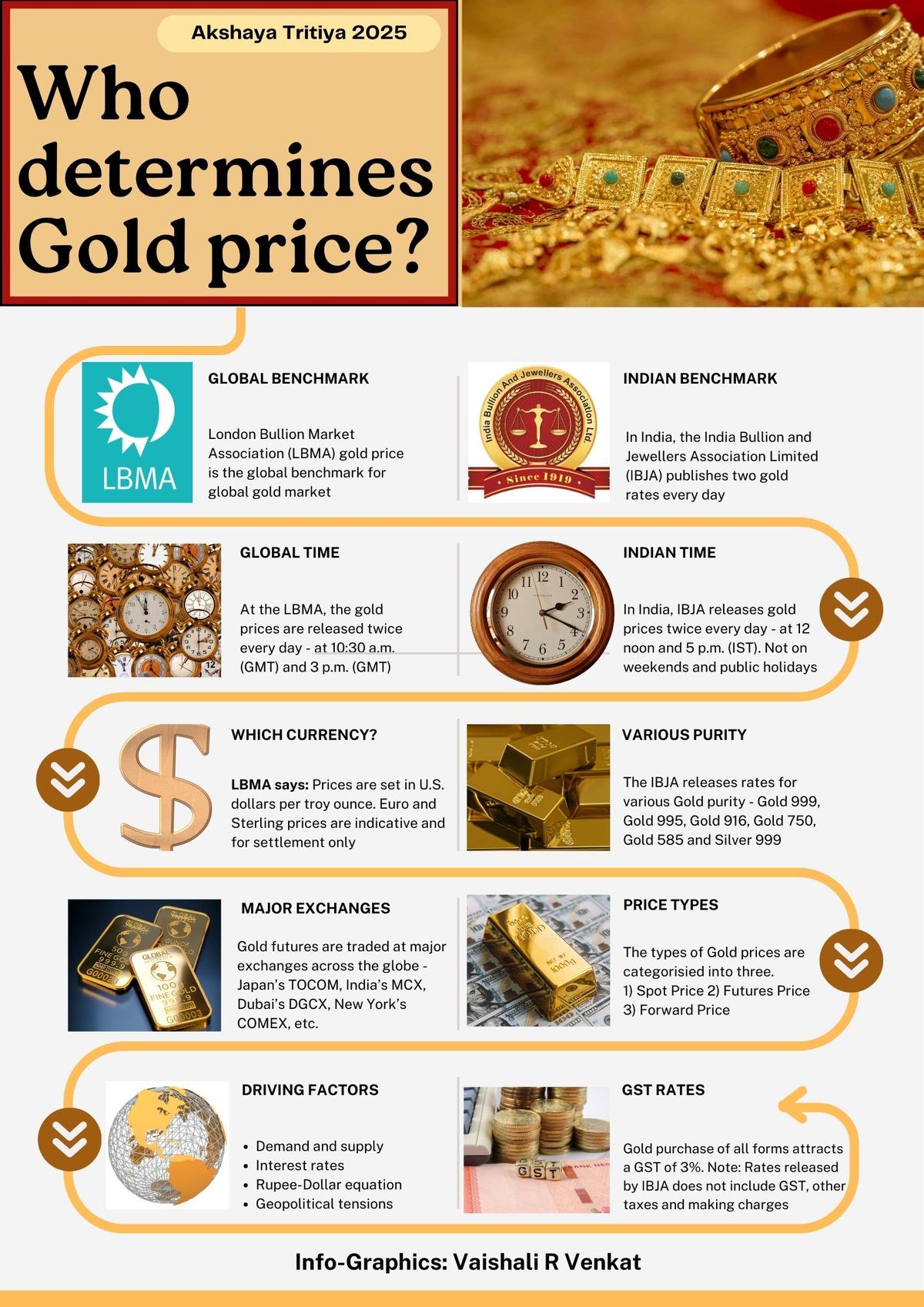Gold is always considered a haven and a good asset class for hedging. Financial experts suggest investing in it when in doubt or fear — be it of market crashes, volatility, recession, inflation, or hyperinflation. For this reason, not just individuals, even institutional players and countries at large invest in gold.
As per the World Gold Council (WGC) Q4 2025 data, India’s gold reserves are at 876.18 metric tonnes, and the Reserve Bank of India (RBI) was the second-highest central bank, after Poland, to purchase gold. India added 72.6 tonnes of gold to its kitty in 2024, raising its gold reserves bar by 9%, thereby putting India in the top 10 countries with the largest gold reserves.
The price of the yellow metal surpassed $3,500-an ounce and was an all-time high on April 22, 2025, owing to geopolitical tensions triggered by U.S. President Donald Trump’s tariff hikes. This is not a one-off moment when gold prices have reacted to the twists and turns in the global geopolitical landscape. History is replete with instances of gold buying frenzies despite the sticker shock. As per the WGC, around 2,16,265 tonnes of gold have been mined throughout history. So why this gold rush, and what determines gold’s price?
Is gold an investment vehicle?
From the lens of investment, gold is not a ‘productive’ asset, insofar as regular cash flows. For informed investors, it might remain enigmatic as to why people buy gold when prices are on a tear, despite its ‘unproductiveness.’

In India, factors such as import duties, tax rates, local demand and supply, strength or weakness of Rupee are also taken into account before the final price is fixed.
| Photo Credit:
Vaishali R Venkat
Say for instance, investment in equity offers you part-ownership in a company and access to cash flows, in the form of dividends, in proportion to the number of shares you have purchased. On top of it, when the company grows, it gets reflected in the current market price. Likewise, you gain interest income for bonds, fixed/recurring deposits. Investing in a property gives you a rental income. But, gold doesn’t beget cash flows, and comes with the hassle of maintenance cost and safety concerns.
Hedge against uncertainty
But financial experts view gold as a tool for hedging, rather than a mode of investment. When a storm of uncertainty unleashes, the anchor of gold keeps you afloat. Gold is used as a hedge not just against hyperinflation or market volatility, but also against extreme uncertainties.
It’s an axiomatic historical truth that during the toughest times of India-Pakistan Partition in 1947, millions of people were displaced, and those who carried gold heirlooms felt more secure financially. Gold is easily portable, cashable, and globally accepted, even though it is not considered a currency now.
What determines the gold price?
Fixing a price for the yellow metal is not a no-brainer. Multiple factors in the global arena – demand and supply, economic conditions, geopolitical tensions, inflation, the U.S. Fed interest rates, currency fluctuations, Rupee-dollar equation, strength of the U.S. dollar, central bank policies, buying and selling of gold reserves by countries – play a vital role in arriving at the value of gold. On the supply side, gold mining, recycling, exploration cost also impact its price.
In India, factors such as import duties, tax rates, local demand and supply, strength or weakness of Rupee are also taken into account before the final price is fixed. Seasonal trends, such as festivals, weddings or auspicious days, such as Askhaya Tritiya, also boost demand and impacting its price.
Who determines the gold price?
The London Bullion Market Association (LBMA) fixes the gold price as the benchmark for the global gold market. At the LBMA, gold prices are released twice every day – at 10:30 a.m. (GMT) and 3 p.m. (GMT). LBMA says, “Prices are set in U.S. dollars per troy ounce [approximately 31 grams]. Euro and Sterling prices are indicative and for settlement only.”
In India, the India Bullion and Jewellers Association Limited (IBJA) publishes gold and silver rates twice daily – at 12 noon and 5 p.m. The gold price is not released on weekends and during public holidays. It releases rates for various gold purity – Gold 999, Gold 995, Gold 916, Gold 750, Gold 585, and Silver 999. Though gold purchase of all forms attracts a GST of 3%, rates released by IBJA does not include GST, other taxes and making charges.
(The writer is an NISM & CRISIL-certified wealth manager)
Published – April 30, 2025 12:31 pm IST
Leave a Comment